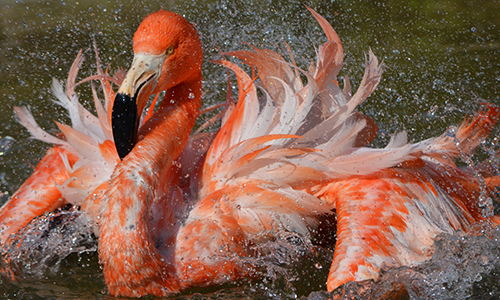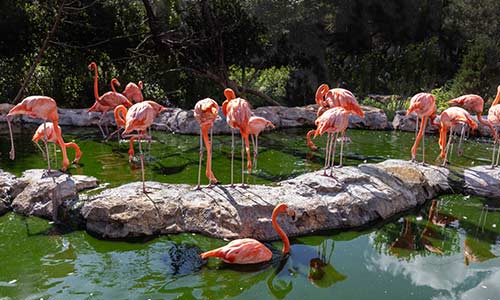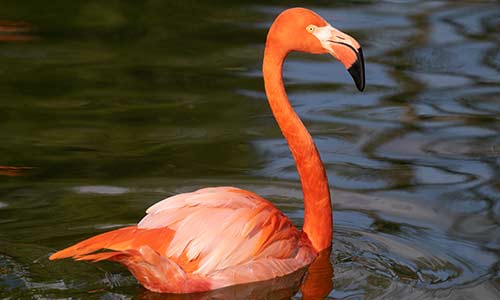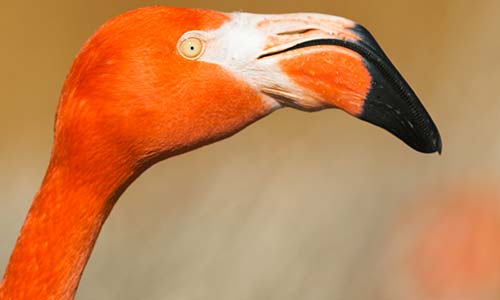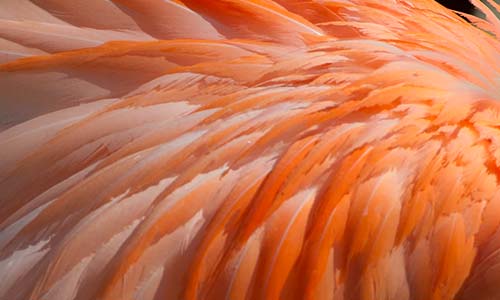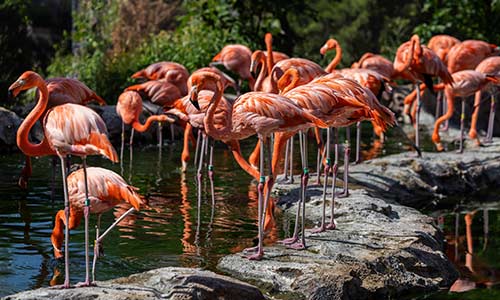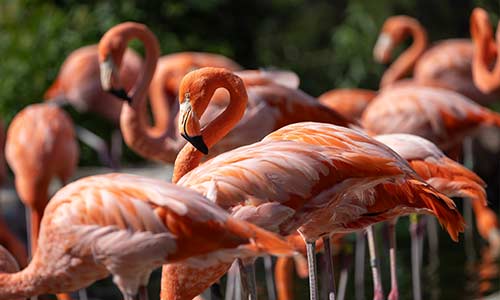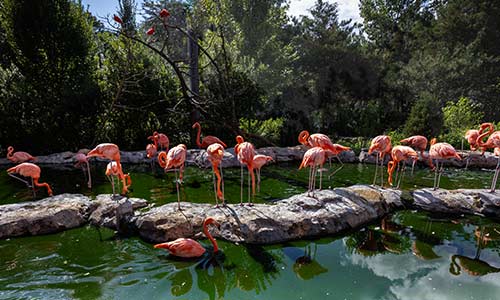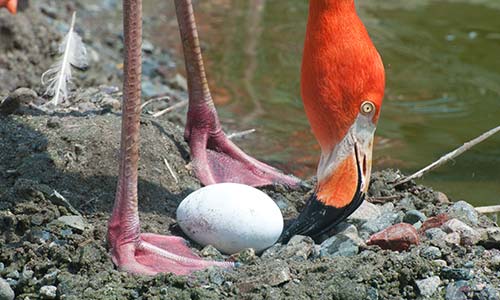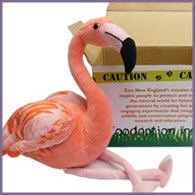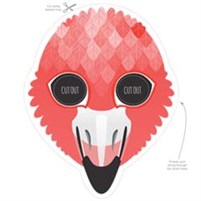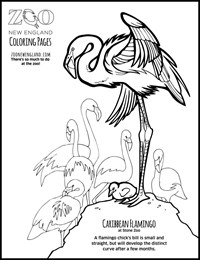Caribbean Flamingo
Phoenicopterus ruber
About the Caribbean Flamingo

Geographic Range:
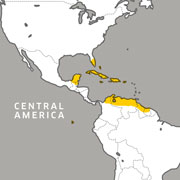
Class: Aves
Order: Phoenicopteriformes
Family: Pheonicopteridae
Genus: Phoenicopterus
Species: ruber
The Caribbean flamingo is salmon-colored with pink legs and feet. Flamingos live in large colonies notable for their bickering and squabbling, which is typical social behavior. They communicate with honks, and often one bird’s honk can get the entire flock going. Flamingos while the day away preening, feeding, and resting on one of their long legs.
Committed to Conservation
Zoo New England participates in the Carribean flamingo Species Survival Plan. By sharing research and knowledge, participating institutions work together to establish guidelines that best ensure the health of captive populations, and with success, the survival of endangered species.
Flamingo Facts
Appearance:
Caribbean flamingos are salmon-colored with pink legs and feet. They have a long and sinuous neck. Their beaks are bent downwards just below the nostrils. What appears to be their knees are actually heels. Flamingos walk on their toes and their knees are hidden under their feathers.
Size:
- Height: 3.4 to 4.8 feet
- Wingspan: 4.5 to 5.5 feet
- Weight: 6 to 8 pounds
Diet:
Caribbean flamingos eat brine shrimp, shellfish, algae and brine flies. These food items are high in pigments that give this large bird its color.
Reproduction:
Caribbean flamingos have their breeding season through the months of April and May. Males and females pair up and engage in a courtship ritual. Both males and females care for the single egg during their 29- to 32-day incubation period. They reach sexual maturity in six years.
Behavior:
Caribbean flamingos live in large groups and spend the majority of their day wading, eating, resting and preening. These flamingos have long legs that help them wade into deeper water than other birds. When feeding, they turn their head upside down to gather their water and food. They then use structures in their upper beak to strain out the water but not the organisms they eat.
Habitat/Range:
Caribbean flamingos live in brackish or salt water mudflats, lakes or lagoons. They range through the Caribbean and northern South America.
Median Life Expectancy:
Their wild life expectancy is unknown. In captivity they can live up to 44 years.
You Can Find This Animal in the Caribbean Coast
Zoodopt a Flamingo
Zoodopts support the care and feeding of our animals, and with each purchase, we'll bring a little of the Zoo to you! Zoodopt today!
Related Video
"Seeing Pink:" Learn more about Stone Zoo's flamingos
You May Also Like
At Franklin Park Zoo:
At Stone Zoo:

